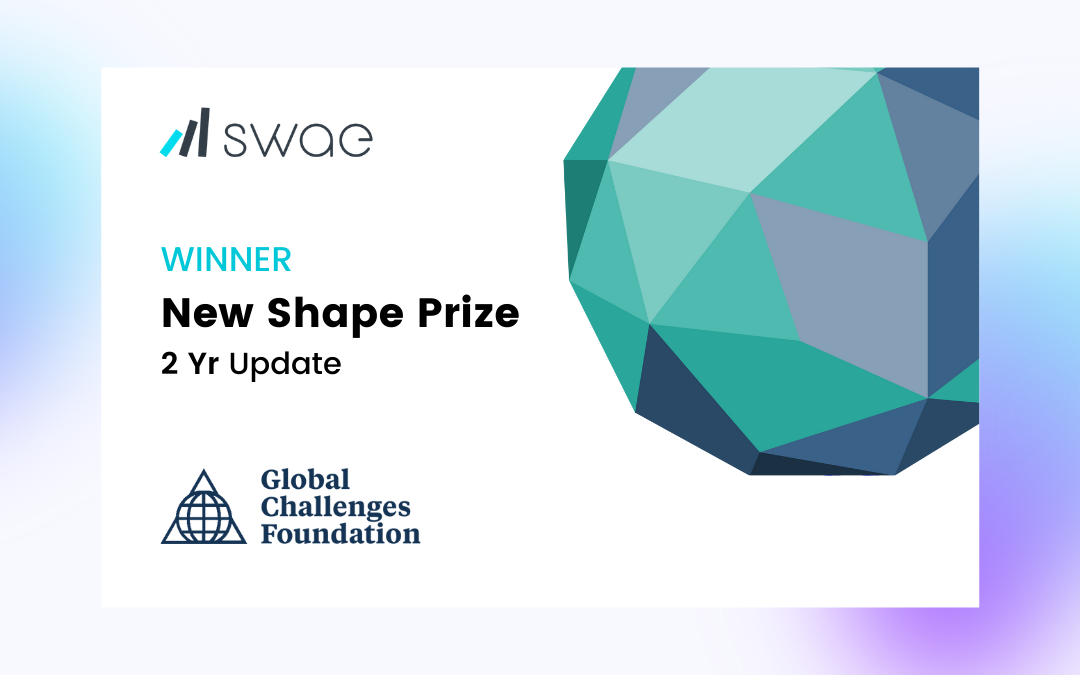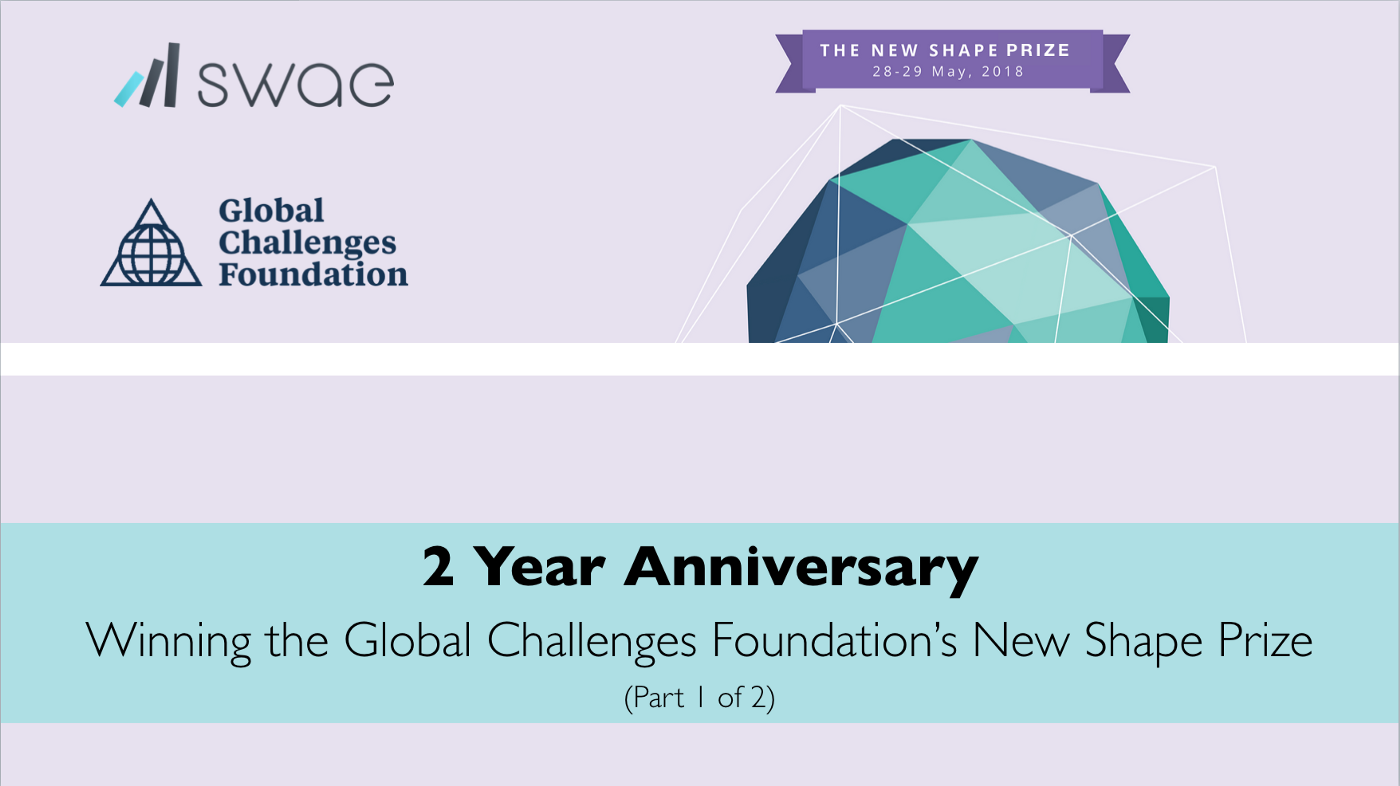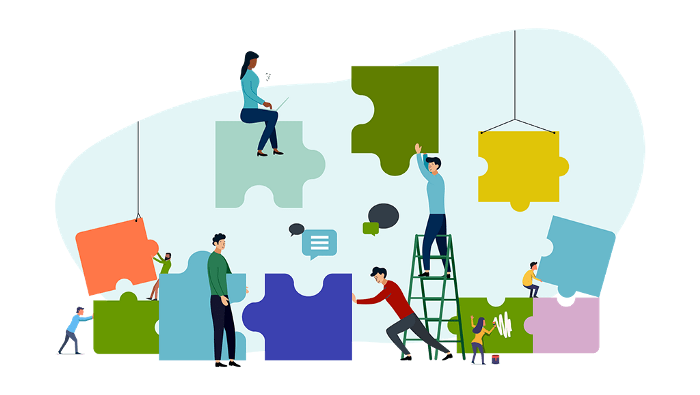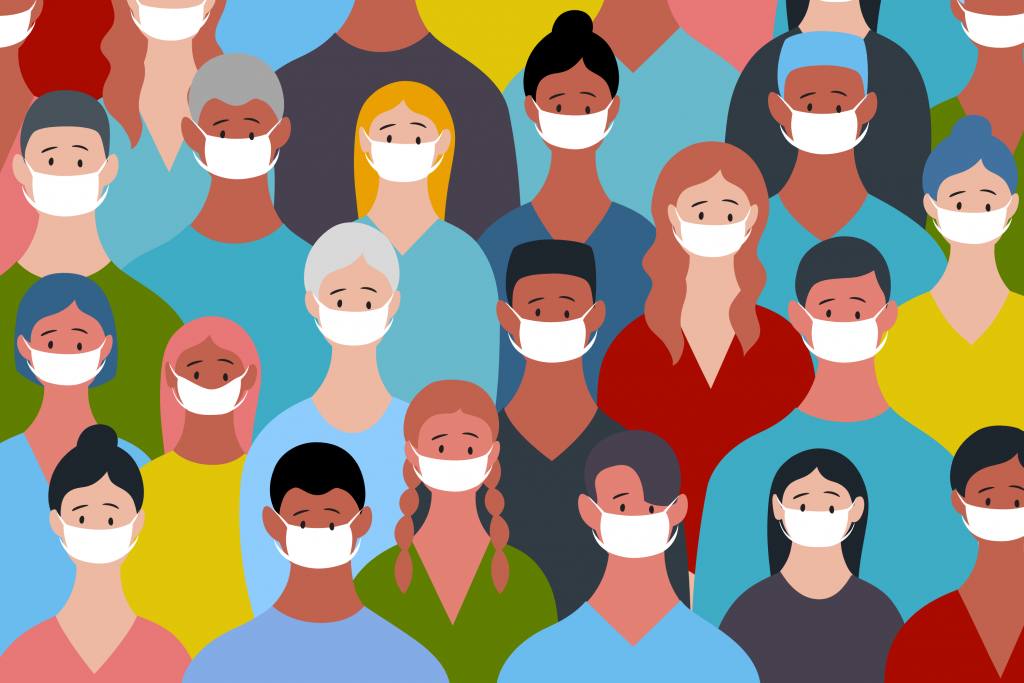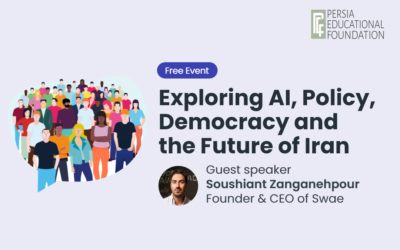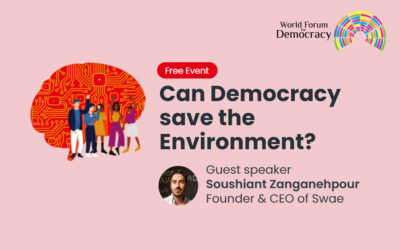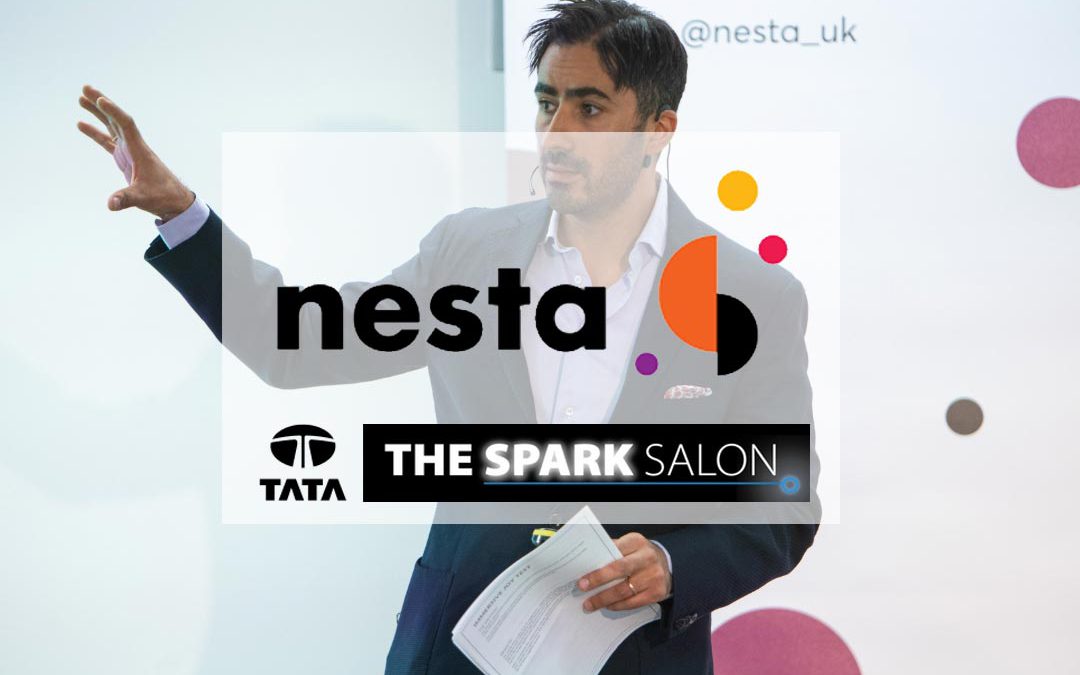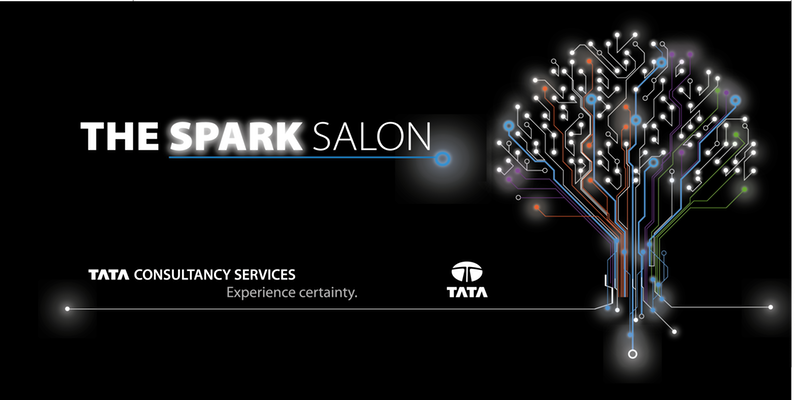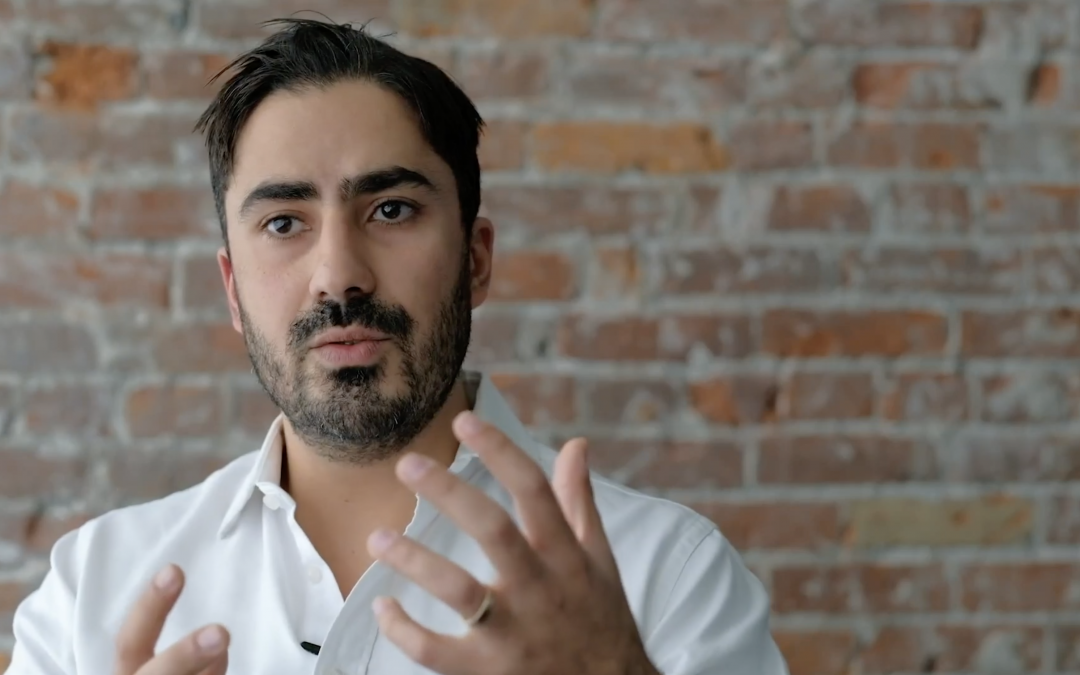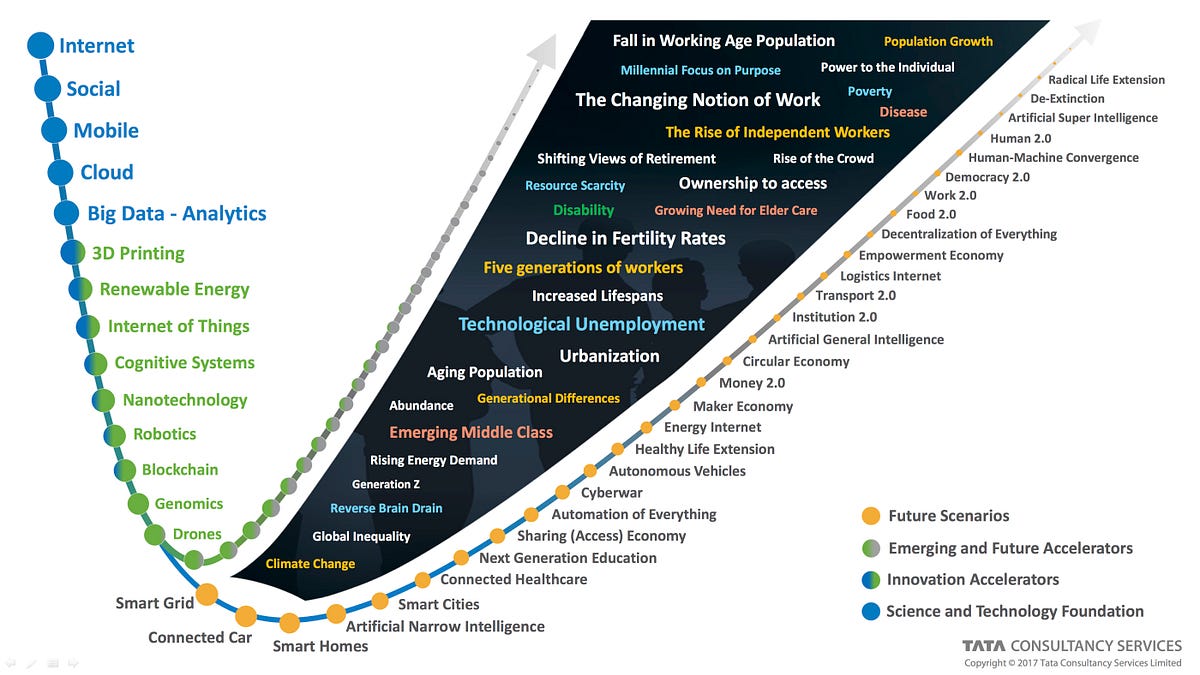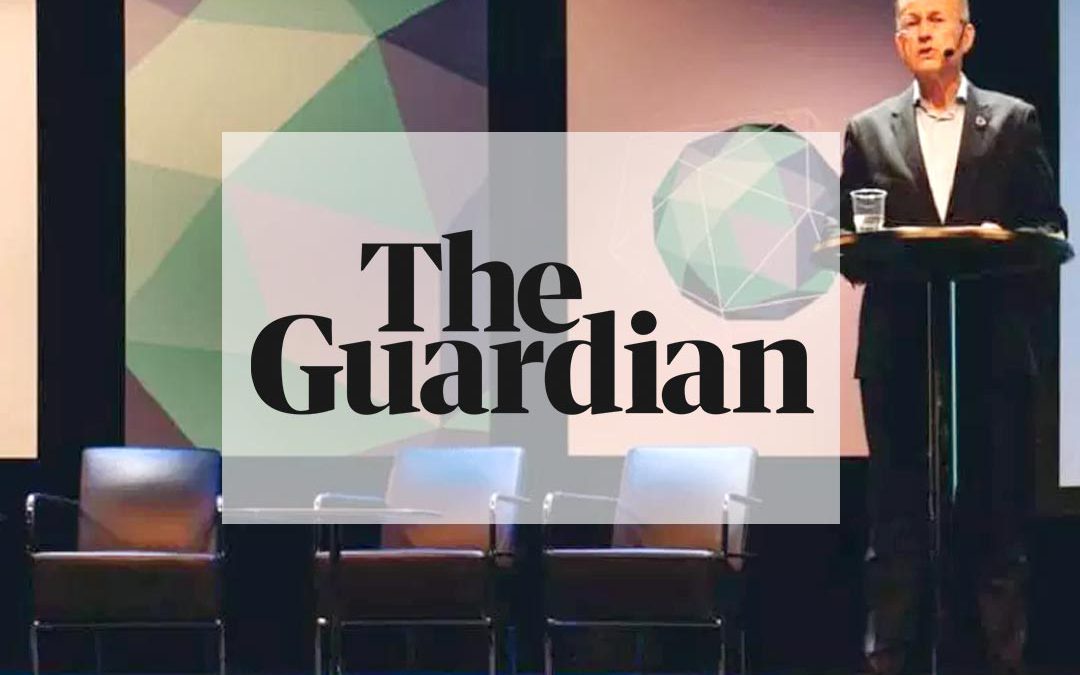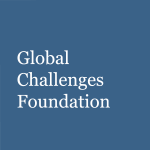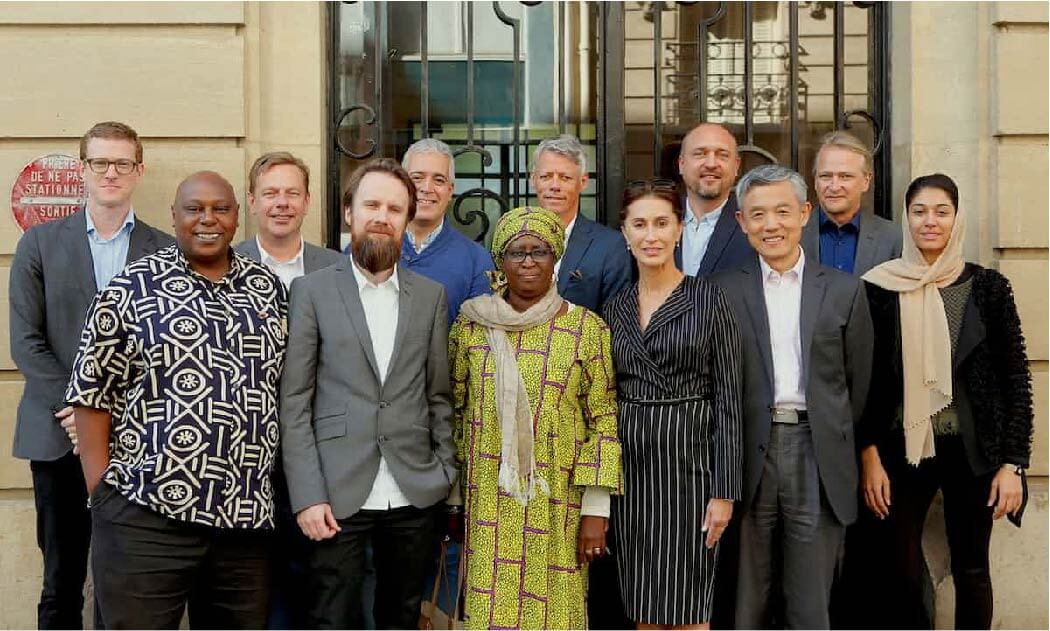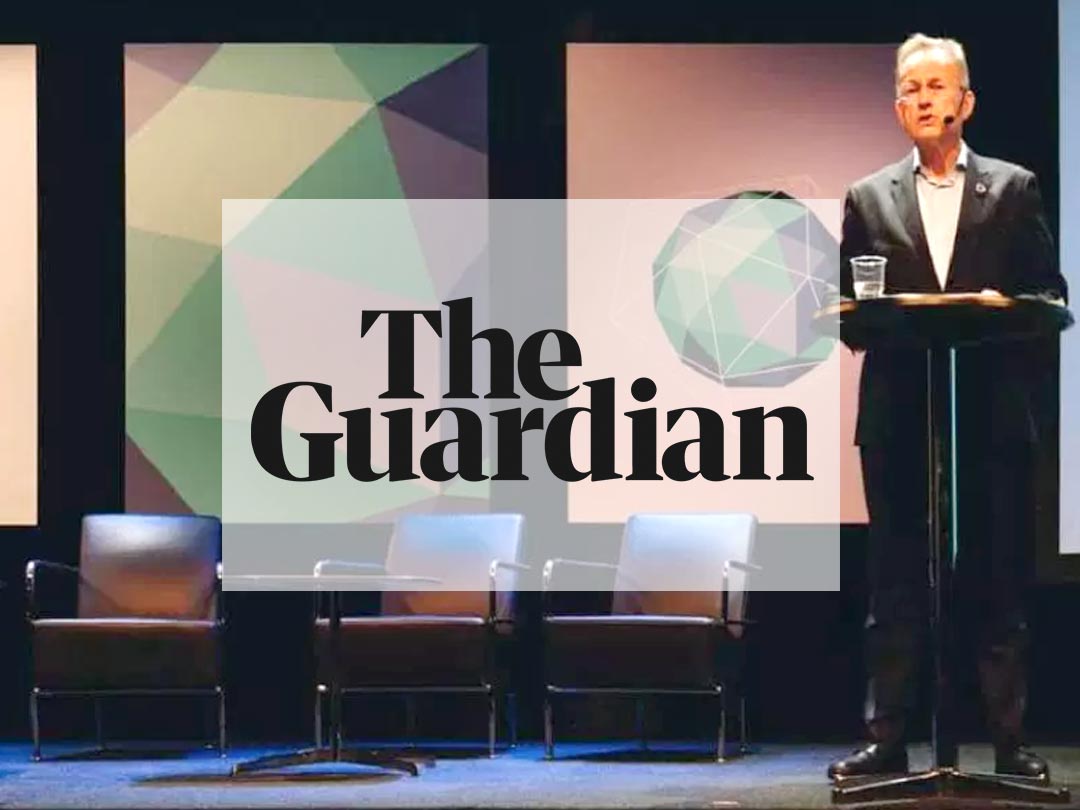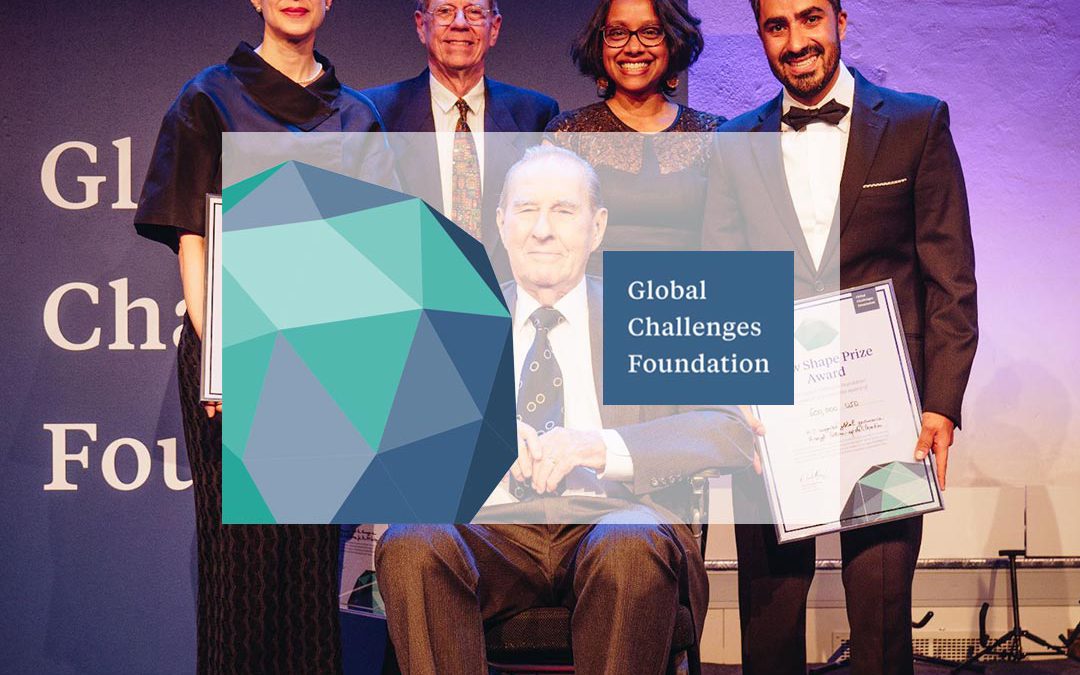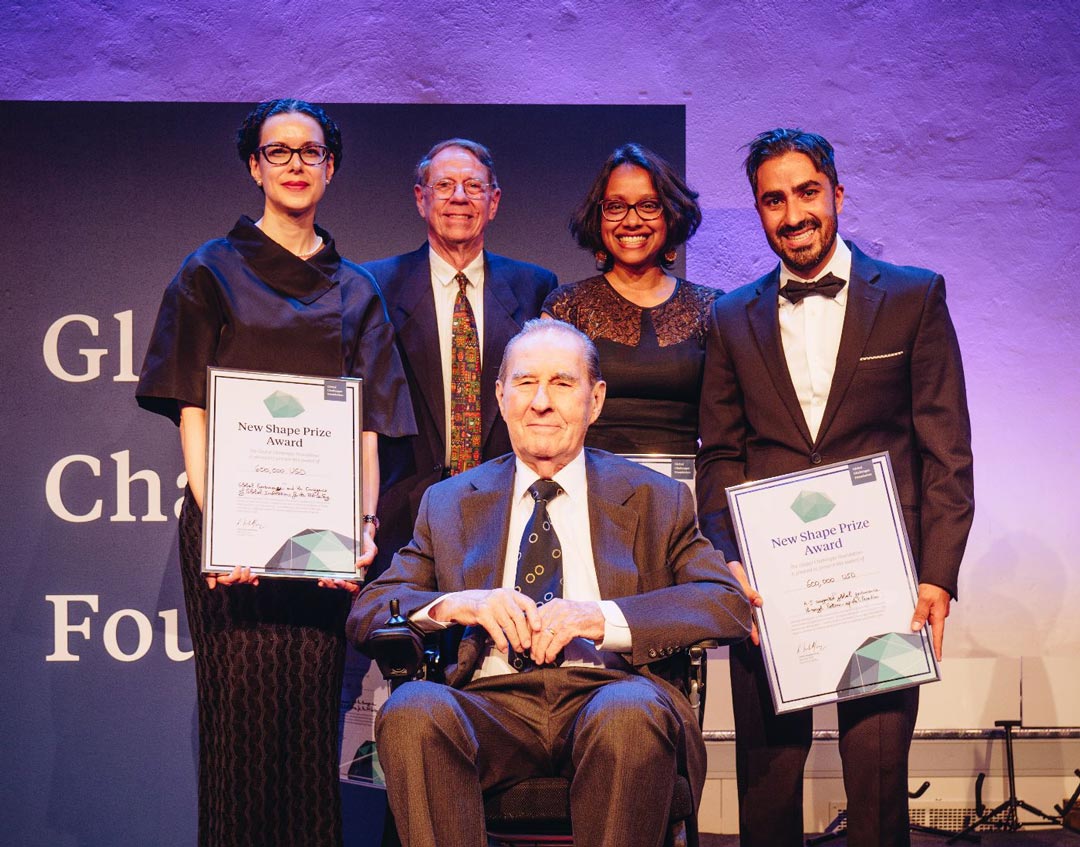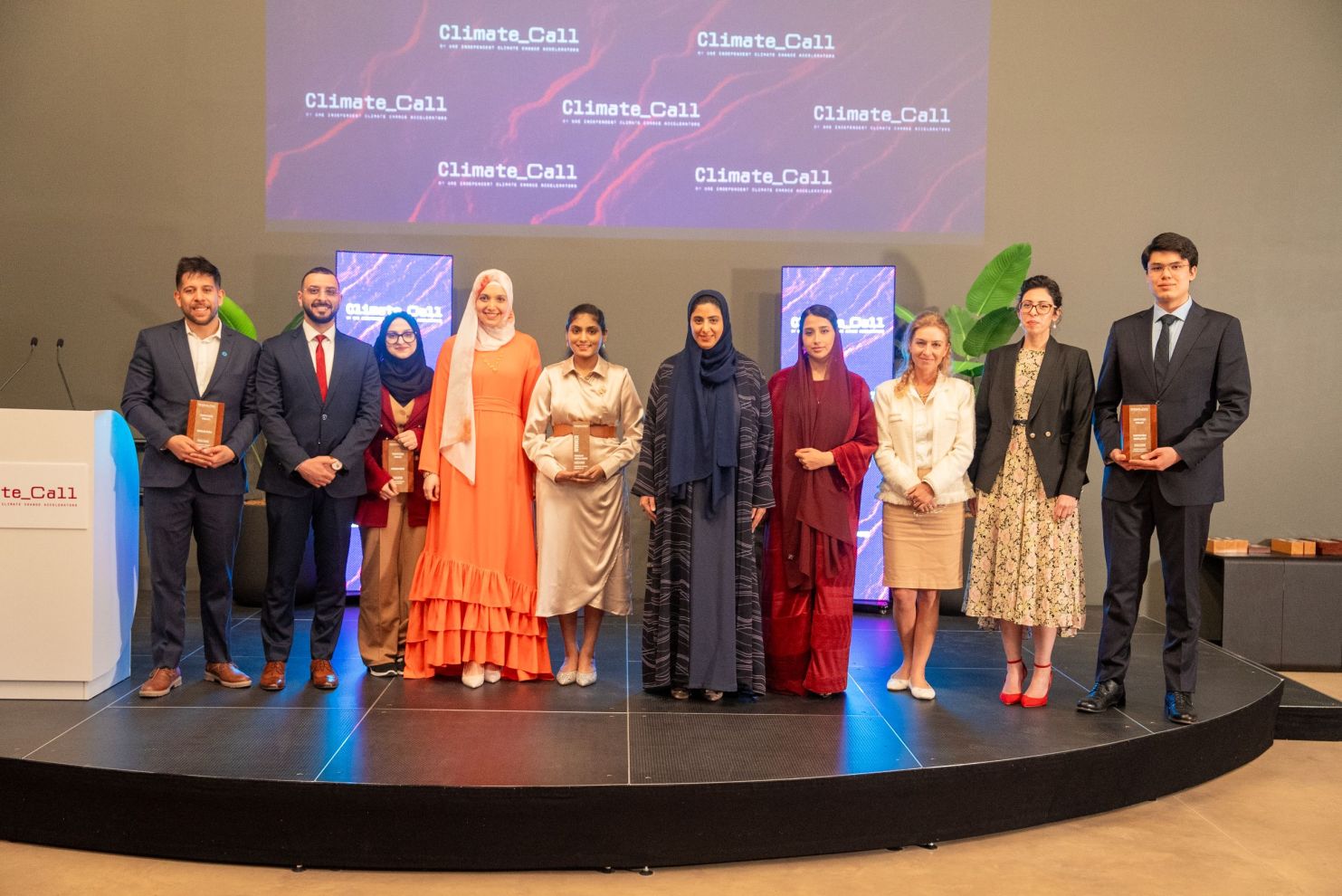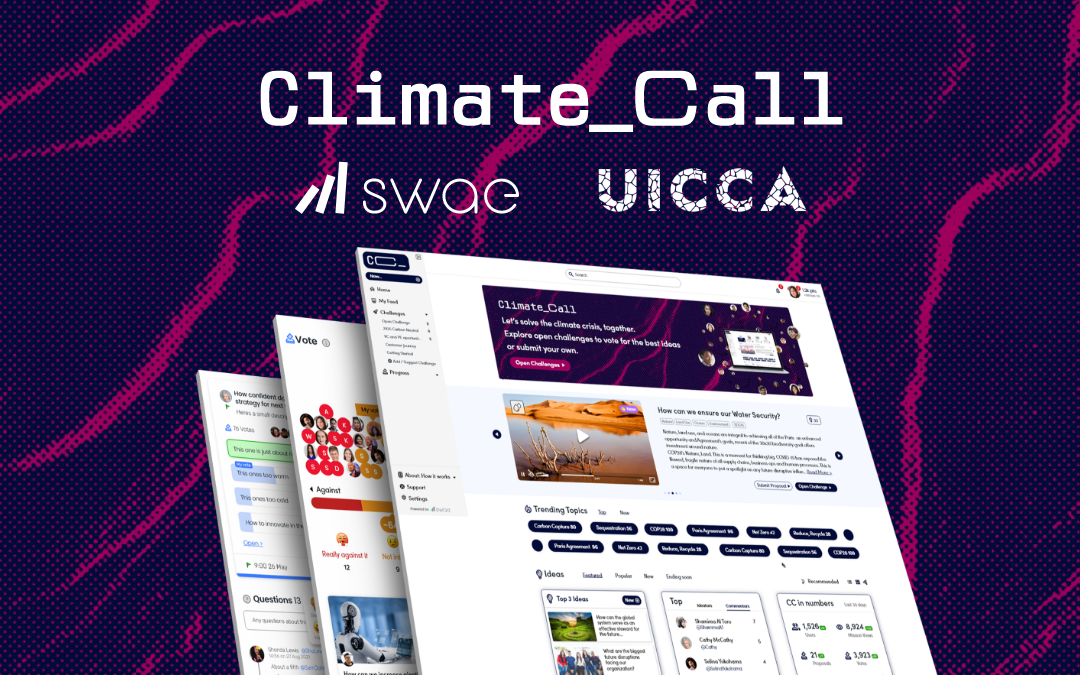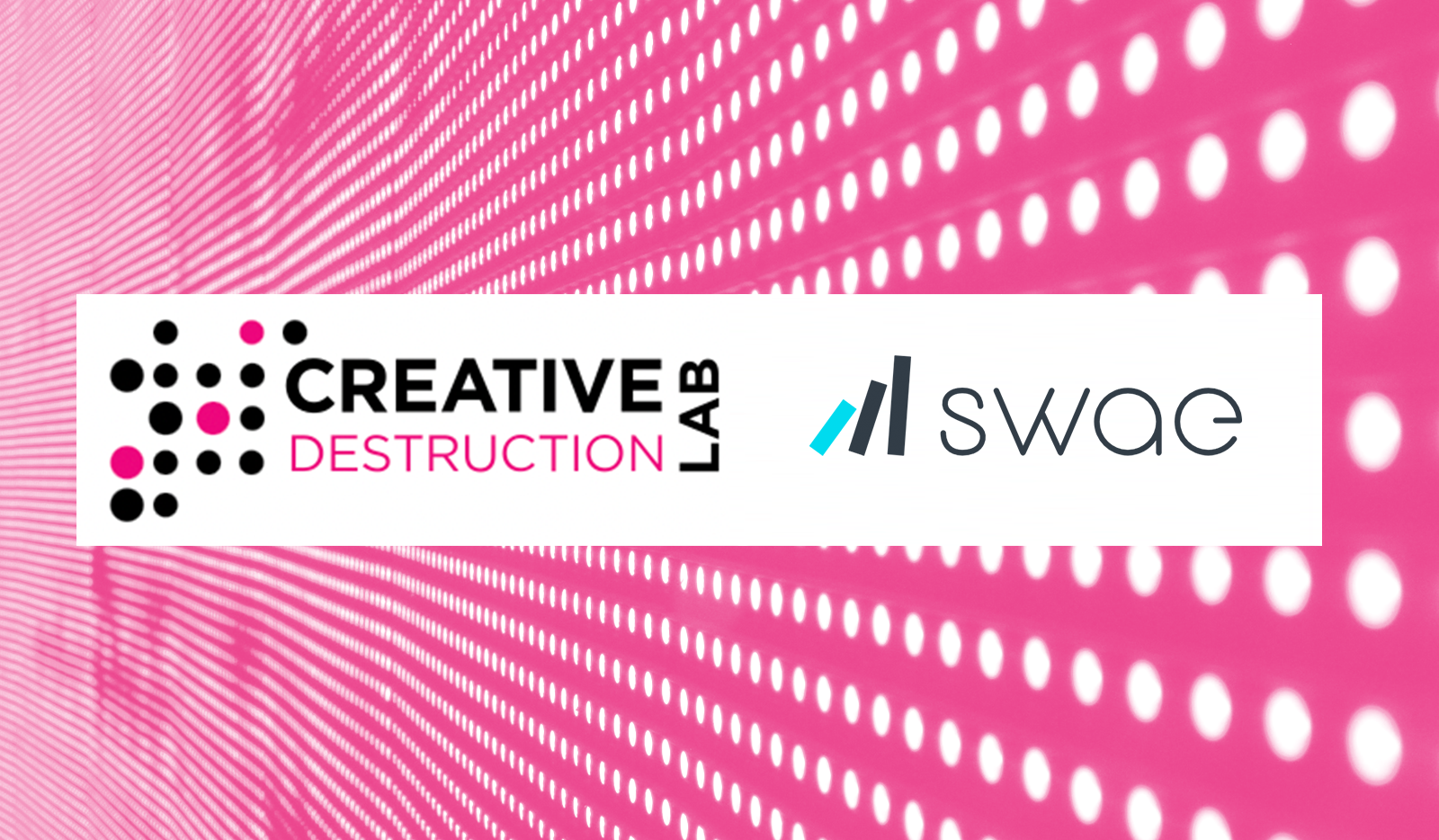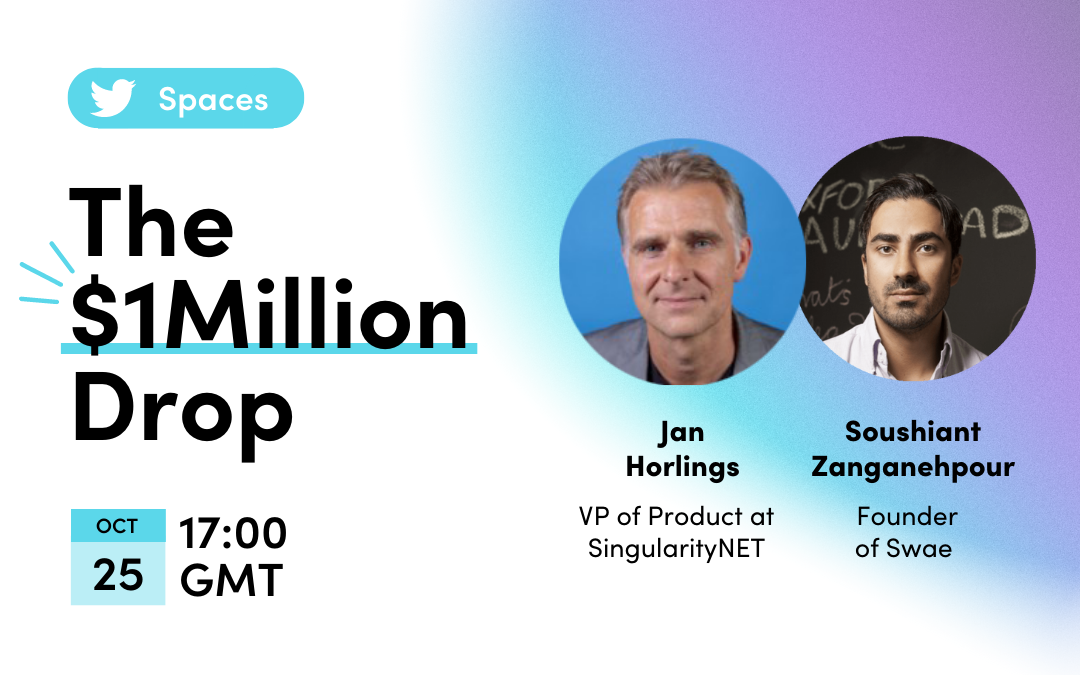1. Abstract
The founding purpose of our current international governance system was to prevent interstate violence and large-scale conflict, creating the conditions for collective prosperity.
Since its inception, the world has not seen another world war and the system has helped prevent numerous conflicts while inculcating shared norms of cooperation and progress.
That said, today’s reality is very different from when our global governance system was built. We face man-made species endangering existential crises that transcend individual races, national interests, and sovereignty. But, today’s institutions are poorly designed to building experimental, self-sacrificing solutions and alliances for prioritizing collective preservation above a narrow set of national interests. Our norms, operating assumptions, and legal jurisprudence prioritize national interests above all else. Cooperation and progress under are framed as zero-sum calculus, breaking down the ability of leaders to make necessary concessions for long-term collective progress.
The resulting limitations of our governance structures have created dangerous under-managed macro risks that threaten our survival and future prosperity. We need new actors, new operating assumptions, and norms to help reframe our priorities to protect humanity-first, and nations second.
An update to our global governance system must start with building new digital tools and institutions at the city, national and international levels, allowing citizens to directly ideate, build strong proposals with support of AI, debate and build consensus with insights mined from millions of conversations by AI, and vote the best proposals into existence. Furthermore, new special economic and political zones will be created to test and institutionalize the results of the new decision-making protocols. After considerable testing and iterations, a movement can help spread these tools and institutions to complement or replace existing governance institutions and decision-making protocols and processes.
The digital tools for a new governance model include:
Blockchain global identity
Immutable, verifiable identity, operating on a public blockchain
Facilitates incorruptible liquid democracy protocol, sentiment capture, participation in e-parliaments, and other key functions of new institutions, providing fidelity to institutions
A necessary building block for a decentralized, direct, deliberative global democracy
Citizen sentiment tracker
A polling service at the local, national and international levels leveraging anonymized blockchain ID, helping shed light in real-time about how people feel about certain issues and how they believe those should be dealt with.
AI-augmented proposal development tool
Tool combines anonymisation with ai-augmentation and crowd intelligence to help identify, create and build consensus around new bottom-up solutions for complex, multi-stakeholder challenges.
Helping increase likelihood of participation, and quality of ideas inputted
AI-based budget simulator & trade-off analysis tool
AI-based budget simulators and tradeoff analysis tools, leveraging real-time data, helping highlight the potential implications of supporting one proposal versus another.
AI-supported mass policy deliberation tool
Through data mining and computation, AI and machine learning unveil patterns of synergy and agreement amongst disparate and opposed constituent groups, helping create the building blocks for creative, multi-stakeholder solutions.
Implementation & Impact Tracker
Transparent real-time workflow sharing where approved proposals sit relative to being implemented.
Reveals degree to which a “promise inflation” exists; the % of promises being inflated by representatives or those in charge of executing approved proposals
Real-time dashboard showing the potential intended and unintended implications and impacts of various implemented solutions.
The new institutions include:
Digital City, Country, and World
A digital environment and testing ground for building solutions to existing local, national and international challenges and policies
Injected with real-time raw data about developments in cities, nations, the world
Allows for the creation and modeling of creative policy solutions in a safe environment
Suggestions that have large backing and consensus on these platforms will compete against existing solutions crafted by today’s leaders for acceptance In the future, will be the basis by which new public policies are initially conceived and stress tested, before deep development and feasibility at local, national or international stages prior to implementation.
Ministry of Ideas – City, Country, and World
Local, national and transnational institution, providing relevant solutions concerning how best to steward our commons
Collects the most popular ideas from digital environments (city, nation, world) or small-scale physical pilots for further deliberation.
Global Library of Societies Solutions – City, Country, World
A repository of all past policies explored by cities, nations and global coalitions to deal with different systemic challenges.
Shares the success or failure of experiments and policies.
Includes data sets and impact reports.
Parliament for Citizens – City, Country, World
An institution where the most popular proposals from the various ministries of ideas are discussed and deliberated.
Allows for distributed sourcing of expertise and creative ideas concerning different issues we face locally, nationally or internationally to provide feedback and ideas.
Open to constituents from a mix of territorial and Internet-based jurisdictions, helping legitimize the internet as a sovereign jurisdiction.
Allows for the functioning of a direct, deliberative liquid democracy protocol.
Will influence the trajectory, content, and approach of different local, national and international public policy solutions that are consequential to the stewardship of global commons.
Helps current leaders see the delta between their interpretation of the public will and the public’s direct articulation of that will.
The basis for future consensus formation and policy-making in the long-term.
Global Parliament of Mayors
A new institution where the majority of legislation and policies proposed are solutions co-created by different mayors only with the majority approval of their constituents (evidenced through citizen sentiment capture tool).
Provides institutional authority to mayors to decide over their territory.
Gives them the opportunity to compete to build better solutions to global challenges, ones that nation states are unwilling or unable to create.
Crowd-Justice
An open-source judicial system and platform reimagined around the internet era.
Allows for dispute resolution at scale, using algorithms to source the right experts for the right problem around the world.
An opt-in protocol, decisions are legally-binding (unlike ICJ).
Exponentially more cost-effective and incorruptible than centralized legal systems.
2. Description of the model
Context
The current global governance system and its associated institutions were founded in the aftermath of two world wars. The system’s primary purpose was to uphold the required pillars for long lasting peace between nations. These included enshrining national sovereignty, creating the conditions to pursue shared security, and global social and economic prosperity.
The system and its institutions encourage diverse nations to cooperate while pursuing objectives that protect their sovereignty and interests. The notion of national sovereignty and each nations inalienable right to pursue its national interests as they deem fit are key operating assumptions for the correct functioning of the system. Progress in the system relies on coalition-building and the alignment of national interests with that of a collective. Sometimes different nations’ goals align, most often, interests are incompatible with the majority. Concessions towards the common good are perceived to be zero-sum tradeoffs, depending on how well your national economy is postured vis-a-vis the particular issue. For example, trade or climate change quotas are good examples of this zero-sum dynamic. There are a limited number of tools available within the system to help nudge a nation towards prioritizing the interests of the collective above those they have predetermined. The use or threat of force as tool to influence a nations preferences, negotiating posture or choice of alliances, or as a means for reconciling disputes is highly unacceptable. Other tools for influencing a nations perception of a their ‘best’ interests include dialogue, negotiations, trade, treaties, incentives, investments, and sometimes economic sanctions. Most international norms or agreements created within this system are voluntary, opt-in declarations that are non-binding and unenforceable.
Current Systemic Dysfunction
The founding purpose of our current governance system was to prevent inter-state violence and large scale conflict. Creating the conditions for mutual-shared prosperity was to be a natural consequences of this primary goal.
At the time, the threat of inter-state war (e.g. Hiroshima/Nagasaki, WW2, Cold War) was the largest man-made existential threat possible. Natural disasters were relative anomalies that did not threaten humanity in any consequential manner. The global commons (air, pollution, water, oceans, space, etc.) were also insignificant priorities and poorly understood phenomena. Issues of commons management – ensuring public safety and health and air quality, creating reliable infrastructure, managing pollution, creating and conserving ecosystems, parks and shared spaces, establishing social norms – were managed within the realm of responsibility of the nation-state. National sovereignty was the baseline used to determine how best to deal with global commons.
Despite episodic challenges with this system, the world has not seen another world war (yet) and the system has helped prevent numerous conflicts while inculcating shared norms of cooperation and global progress.
Though the goals around preventing interstate conflict have mostly been accomplished, today’s reality is very different from the historical context from which our current global governance system was invented.
For example, over the past decades, the nature of conflict and threats to humanity’s progress have changed from interstate to intrastate violence. The genocides in Serbia, Darfur, South Sudan, to crimes against humanity in Syria, Israel-Palestine, to the Rohingya in Myanmar, are all proxies of how poorly equipped the current system is to deal with new forms of collective challenges.
Even more troubling, we face species endangering and humanity-altering existential crises, which are mostly man-made, the likes of which we have never faced before collectively. These phenomena transcend individual races, national interests, and national sovereignty. They are equal opportunity disasters waiting to be unleashed on us collectively.
Unfortunately, our norms, operating assumptions, and legal jurisprudence prioritize national interests above all else. Today our leaders proudly convey they are “(name any country) First!” over and above the systemic global challenges we all face as a species. Defending ‘X’ interest above all else and bargaining on zero-sum winner-takes-most tradeoffs between nations is what the current system optimizes for. Cooperation and progress under the current framework are framed as zero-sum calculus, breaking down the ability of leaders to make necessary concessions for long-term collective progress.
Today’s international institutions are poorly suited to building experimental or creative win-win solutions to the global commons problems we face. We need new solutions, potentially self-sacrificing ones, for prioritizing species preservation above a narrow set of national self-interests and benefiting all of humanity.
Consequently, there are dangerous emerging under-managed macro risks stemming from the limitations of our governance structures. Our system is no longer fit for our new age and we need new actors, new operating assumptions and norms to help reframe our priorities and uphold humanity-first, and nations second.
New Context and Operating Environment – The Case for Decentralization and Disintermediation
The nation state is no longer the only nor most appropriate vehicle for global problem-solving to elevate the human condition. In fact, finding far reaching, win-win solutions by competitive nation states in today’s maze of a governance framework appears to be beyond the capabilities of the design of the system.
In today’s system it is nearly impossible to persuade decision-makers to prioritize the long-term consequences of their actions and commit to self-sacrificing solutions that benefit the greater good; they are too worried such actions will lead to career suicide and opt instead to preserve the longevity of their careers over collective best interests. Consequently, leaders and their governments are losing credibility rapidly for their inability to tackle and solve some of the world’s greatest challenges.
In 2017, the Edelman Trust Barometer surveyed thousands of people across dozens of countries about their level of trust in business, media, government, and NGOs. For the first time in 17 years they found a decline in trust across all four of these institutions. In two-thirds of the 28 countries surveyed, the general population did not trust the four institutions to “do what is right” — the average level of trust in all four institutions combined was below 50%. The study also revealed a staggering lack of confidence in leadership: 71% said government officials are not at all or somewhat credible, and 63% said the same about CEOs.
Today our biggest challenge is not scientific or technical, it is political and systemic. We organize our pursuit of our collective interest through representative democracy and command-and-control centralised organizational governance models that operate on the inalienable right of the nation state to pursue its self-interest and sovereignty.
Though there are certain advantages and efficiencies that we derive from organizing politics around centralized hierarchies that concentrate power and afford mass participation through representation, the costs of maintaining such structures are beginning to outweigh their benefits.
For example, in centralized systems, the concentration of power and decision-making at the top, segments people into the powerful and the powerless leaving the majority feeling powerless, with deep sense of resignation and resentment. Power in such systems is a scarce commodity, worth fighting for, leading people to compete over its access, exacerbating the worst attributes of human nature: personal ambition, mistrust, fear, greed, politics. Concentrated power is corruptible and can lead to deep levels of cognitive bias and group think when smaller concentrations of like minded people decide on behalf of others. The speed of decision making can also be significantly delayed when other possibilities existing in our digital age.
New research is beginning to shed light on a number of negative social and economic problems directly attributed to how we organize ourselves. These include:
High levels of voter apathy. In mature democracies, there are the highest levels of reported voter apathy. In the 2014 US congressional elections, only 20% of the US voting youth (18-24 YO) participated. Most those that did not participate expressed that if you are young and nobody shares your views, the only other option is to protest or not vote at all.
The proliferation of protest movements. Since the 2008 financial crises, the frequency of protest movements demanding political alternatives (e.g. Arab Spring, Occupy) has proliferated, mobilizing millions of people onto streets.
Public systematic silenced. A Princeton University study concluded that the U.S. is not a functioning democracy anymore. Using data drawn from over 1,800 policy initiatives from 1981 to 2002, experts concluded that “…economic elites and organized groups representing business interests have substantial independent impacts on U.S. government policy”, “while mass-based interest groups and average citizens have little or no independent influence”, and the “rich, well-connected individuals on the political scene now steer the direction of the country, regardless of or even against the will of the majority of voters.”
High levels of employee disengagement. A Recent Gallup study revealed that in the private sector we witness the highest levels employee disengagement; 70% of U.S. employees consider themselves disengaged at work (resembling similar trends globally) which is a source of lost productivity, which produces a high cost on the economy. McKinsey estimates the bottom-line impact of disengagement costs the US economy over half a trillion dollars a year.
As evidence mounts, we’re beginning to recognize that command-and-control centralized organizational models and by extension, representative democracy is less well suited for our times. We are outgrowing old operating assumptions and protocols for collective organization, governance and problem-solving.
Emerging technologies, trends and implications
Thanks to the pace of change ushered in by the internet, the conditions required for global cooperation could be achieved without reliance on intermediation nor facilitation through our existing institutions, but instead through new institutions that allow for greater and more direct citizen-participation. New institutions combined with digital tools can help create new decision-making protocols to help build bottom-up alternative competing policies and solutions, allowing new ideas to be deliberated widely over internet platforms, for consensus to be built around the most powerful solutions. In the short run, the best ideas that surface from these new institutions can act as normative alternatives to the existing solution set we have, and we can invest in lobbying for them to be seriously considered and institutionalized. In the longer term, these new institutions will replace our current governance systems wholeheartedly because they are cheaper to operate, more participatory, create better quality solutions for ensuring collective prosperity.
The internet today has become the primary mechanism for mobilizing power and the masses, the primary means by which to wage asymmetric conflict, and an important shaper of belief systems. It is also the primary means by which global economic activity will be conducted.
On the internet, communities are no longer principally defined by geography or proximity; broad territorial distinctions are less and less important to both social and economic life.
The diffusion of technology is breaking down hierarchies and creating new power structures daily. The rise of cryptocurrencies using decentralized computation server spaces as immutable ledgers compete against central banks creating new definitions of value are good examples of this. The rise of sharing economy ventures competing against traditional incumbents with antiquated business models supported by antiquated regulations also support signal more changes to come.
Technology is amplifying our collective capacity to include new voices, create informed opinion, analyze, build consensus and decide, all with rapidly reduced reaction times. Half the cellular devices being sold now are smartphones, which make up about 80 percent of all internet usage. The phones, in turn, are helping people change the way they spend and manage money; identify, make, and maintain friendships; participate as citizens; become educated; stay healthy; keep up to date with news; and be entertained, incite revolutions, and seek new disruptive innovation.
As internet penetration rates proliferate, bottom-up, citizen-led organizations become empowered because the means of distributing views are so inexpensive.
Simultaneously, we’re moving into an era of ubiquitous sensing where the combination of sensors and data-gathering mechanisms, unlimited memory, and massive processing capabilities, is growing the planet’s pool of data exponentially yearly.
Experts estimate that over the next 10 years’ there will be 150 billion networked measuring sensors, 20 times more than people on Earth, producing data. in 2016 we collectively produced as much data as in the entire history of humankind up until 2015. By 2027, thanks to the proliferation of sensing devices, the amount of data we produce collectively will double every 12 hours.
Digital is becoming the basis for most of our interactions and the more we interact with digital tools, the more we expect them to shape our experiences as consumers, employees, and citizens. As data grows, demands for accessing that data will grow as well, and eventually, people will demand policies be created using indisputable data sources.
These developments combined are creating the conditions for a) deeper interconnection – where networks form and link all their members allowing for rapid resource sharing; b) Disintermediation — where middlemen are progressively undercut and disappearing; and, c) Decentralization – where networks redistribute power to disparate parts of society and concentration of power becomes more and more difficult. As a consequence, unlike previous era’s, this new era is one where the power of the individual and the group grows daily and institutions are less powerful.
Virtually every sector impacted by the information revolutions has seen one powerful, transformational trend shift expectations, and thus its likely that changes to government and organizational governance models will be profound as well.
We are inheriting this new reality faster than expected but we live at time where two competing velocities are clashing against one another. In our physical and social worlds, we’re experiencing uneven and disruptive economic growth, fear of change, and anxiety about immigration and integration. In our digital and technological world, networks and connections are getting faster, cheaper, and smarter. The two competing forces – technology which is increasing exponentially and governance models designed to handle linear growth – are pulling institutions apart, holding the world back.
On this rapidly shifting ground, leaders are acting before thinking and creating laws or regulations views that have profound impacts on the nature of our societies without leveraging technologies or inviting broad, far-reaching public debate. They are able to continue doing so because we manage the world using antiquated institutions that are riddled with structural limitations. Our governance models are outdated and extremely slow, not taking advantage of modern tools for more agile, diverse, and inclusive decision-making.
Every aspect of democracy has been changed by the advent of the internet and new technology, except perhaps how citizens directly influence the operations of our governments through the selection of our representatives. Voters could have much more power much more often.
Centralized command-and-control organizational governance models and mass participation through intermediation had advantages when the model was first conceived, but in an age of instant digital communication, it appears more a roadblock to progress than an enabler of the expression of broad public will. In today’s political environment, in any instance where intermediation is the model, the representatives and intermediaries are extremely difficult to access, engage and influence. Their focus appears more to be on empire and career building than on civic duty. There are also quite limited routes to exercising accountability over their actions. The effort required to keep them accountable is often not worth the effort expended. People, therefore, resign themselves to the status quo, become disengaged and distrustful of entire institutions. For example, we see the rise of unchecked political dishonesty as a new operating norm. Misleading voters to advance one’s political agenda has always been around but in the past, we had relevant tools for maintaining some degree of accountability. Today it appears those tools don’t work, and dishonesty is met with no consequences and no counterbalance. We see new heights of populism and opportunism. For example, in the Brexit campaigns and following the referendum, into the first hour of the referendum decision, the ‘Leave’ campaign already backtracked on one of their major campaign pledges: To contribute the money the UK saves leaving the EU to their national healthcare system, the NHS. In the US presidential elections, Trump made many promises including to build the wall with Mexican money, have a plan for getting rid of ISIS in his first 30 days in office, to repeal Obamacare, to even put Hillary Clinton in jail and drain the swamp, none of which have been executed.
In today’s consumer and technology-driven world, people are increasingly catered to and provided customized solutions. The more they experience this, the less tolerance they have for being bystanders, accepting latency in reaction times by institutions, or being told what to do from the top.
The convergence and access to different exponential technologies are reshaping human behavior, opening new areas to human understanding, enabling new forms of creative expression, empowering new means of economic activity, and inspiring new thinking about the way lives and governments and businesses should be organized. These consequently, are putting significant pressures on our 19th and 20th-century institutions to radically reform or be replaced.
These combined make for a new foundation for developing a different operating context through which we navigate problems, identify solutions, build consensus and institutionalize proposals to global challenges we all face.
Creating new realms of sovereignty
Society is changing. In this new era, the rules are unwritten, the terminology ill-defined, and few doctrines exist to help us navigate future challenges.
Historically, when new unexpected and unwelcome realities surfaced, the international community mobilized to recognize systemic changes and built new norms and institutions to counter-balance the growth of negative systemic externalities. For example, when the nature of violent conflict changed from primarily interstate to intrastate and when the world witnessed episodes of genocide and crimes against humanity (e.g. conflicts in Bosnia-Herzegovina and Croatia, Rwanda, Darfur), the UN Security Council led the establishment of two separate temporary ad hoc tribunals to hold individuals accountable for atrocities, and later created a permanent international criminal court. We also created new international norms, such as the Right to Protect (R2P) principle.
In the same vein, to help us deal productively with systemic limitations of our institutions, that threaten our species’ survival and prosperity, we must recognize that the ground has shifted beneath our feet and our operating assumptions are no longer valid. We can’t rely on the wisdom of the past or the institutions that were created then to help solve tomorrow’s problems. We need the courage to evolve out of old operating assumptions about how the world should be organized and managed, and whose priorities are the most important.
We must create new realms of sovereignty and new digital tools, institutions and decision-making norms and protocols aimed at highlighting bottom-up voices in cities, nations, and on the international level to help provide strong, rational and logical counter-balance of solutions that compete with those produced by our existing institutions, helping influence and change our collective understanding of what our goals should be and how best to prioritize humanity-preservation over national interests.
New institutions and realms of sovereignty cannot replicate the same systemic dysfunctions and limitations of past models. For example, they can’t and should not be designed around the notion of selecting intermediaries to represent our collective best interests. They should be adapted for emerging and expected cultural norms and technological possibilities, not be constrained by yesterday’s cultural legacies. Reform of the existing system and its institutions should also not be the focus of these interventions, though that may naturally occur as a consequence of their success and adoption.
The Path Forward – Foundations of New Governance Model
Enshrining the Legitimacy of Cities
In addition to creating new institutions, the importance of cities, which are currently under-represented in governance models and structures, will need to be amplified as they will be the epicenter of future governance power and clout.
Cities currently generate 80% of global GDP, and this proportion is expected to increase even more. Already more than 50% of the global population lives in cities, and experts predict the number will increase to 60% by 2020, and 75% by 2030. Fast expanding cities and shanty towns in the developing world is where virtually all future population growth will take place.
Rapid urbanization and expanding city limits will lead organically to the continued emergence of “megacities”.
Due to massive population growth and density and growing economic power, cities will eventually eclipse nations in terms of economic and political importance and can provide leapfrogging opportunities for society to grow out of the limited existing governance structures we have. Cities don’t have the same narrow interests and are not insulated from the decisions-taken as elites representing nation states often do. They have to live with the consequences of poor decisions and therefore often choose differently. Nation states are independent, competitive, and separated by territorial boundaries while cities are interdependent, cooperative and increasingly forge positive win-win partnerships. The city may be the most crucial form of political organization of the future in the coming decades.
Cities currently face limits to their ability to address universal problems such as climate change or to pursue other national or global goals. This can change, however: new institutions can help popularize, formalize and institutionalize creative ideas and solutions to difficult societal problems and global challenges originating from mayors or their constituents. What succeeds in one megacity can quickly become a global standard. Given their scale, this kind of domino effect can affect massive numbers of people.
Building and Legitimizing New Institutions
In the coming decade, efforts to increase internet access and broadband speeds are going to bring 3 billion new minds online. They will eventually expect to be involved in governance decisions. According to Historian Francis Fukuyama, in most countries, once a middle class begins to form and begin earning approximately $6,000 USD per capita per year, they begin to demand political participation.
According to Sun Microsystems co-founder, Bill Joy, “no matter who you are, the smartest people in the world don’t work for you. Even if you get the best and the brightest to work for you, there will always be an infinite number of other, smarter people employed by others. It’s better to create an ecology that gets all the world’s smartest people toiling in your garden for your goals.” This is especially true about policy making and governance for our era. The pertinent and niche types of knowledge required to help build nuanced and creative solutions to 21st-century problems reside outside the boundaries of any one organization, government or institution. The central challenge and opportunity for our future governance system will be to design institutions in a manner that they incentivize, harness and access pertinent and diverse knowledge regularly, leveraging the wisdom of crowds for policy making and other core functions.
Consequently, the plan to update global governance systems starts with building new digital tools and accompanying institutions at the city, national and international level that allow citizens to directly ideate, build strong proposals with support of AI, debate and build consensus with insights mined from millions of conversations by AI, and vote the best proposals into existence. Alongside this, we will create new legal jurisdictions (special economic and political zones) where these tools and institutions can pilot and institutionalize the results of the new decision-making protocols. After a period of considerable testing and technological and methodological iterations, we will begin building a movement to spread these tools and institutions to complement or replace existing governance institutions and decision-making protocols and processes.
The overarching goal is to create alternative forms of sovereignty, across the local, national and international spheres, to challenge or complement the authority and sovereignty of nation states to make decisions about our collective well-being.
Tools and Institutions for Future Governance Model
New digital tools include:
Blockchain verified global identity card
Immutable, verifiable identity, operating on a public blockchain.
Similar technology as Estonia’s e-Residency or Democracy.Earth
Facilitates incorruptible liquid democracy protocol, sentiment capture, participation in e-parliaments, and other key functions of new institutions.
Verifies identity providing fidelity and integrity to other necessary institutions (voting, etc.).
Is a necessary building block for a decentralized, direct, deliberative global democratic platform for managing global challenges and negative externalities concerning the global commons.
Can help administer broad participation of citizens in policy formation or referenda at 1/1000 the current costs.
Citizen sentiment tracker
A polling service at the local, national and international levels leveraging anonymized blockchain ID, helping shed light in real-time about how people feel about certain issues and how they believe those should be dealt with.
Captures sentiment in a neutral way.
Results put on the blockchain, are immutable and verifiable.
Can be immediately used to scour the world about people’s opinions regarding existing global challenges and how different solutions for those challenges rank.
Can reveal the delta between solutions proposed by leaders and the public’s support of those solutions on each issue.
AI-augmented proposal and policy development tool
A concept similar in application, technology, and methodology to swae.io
Tool combined anonymisation with ai-augmentation and crowd intelligence to help identify, create and build consensus around new bottom-up solutions for complex, multi-stakeholder challenges.
Tool anonymizes users but links them back to their blockchain based ID, helping verify their identity but limiting any negative implications associated with proposing creative ideas publicly, provides access to AI augmenting tools (fact-finding, language improvement, structural suggestions) to help improve quality of proposals, and crowdsources the deliberation of proposals to leverage the wisdom of crowds.
Will dramatically increase participation, increasing quality of ideas inputted for consideration.
Used to develop proposals for how certain complex problems we face should be solved.
E.g. How should the EU remain intact? How do we build a carbon tracking system that does not penalize economic growth? How do we build more mutuality in trade agreements? How Proposals for reconciling global inequality? How to build resilience against the coming technological unemployment wave?
AI-based budget simulator & Trade-off analysis tool
In situations where complex agreements are difficult to reach, or competing good quality ideas exist for a limited set of resources, AI-based budget simulators, and tradeoff analysis tools, leveraging real-time data, help shed light on the potential implications of supporting one proposal versus another.
Can help groups discover hidden areas of synergy and agreement.
AI-supported mass policy deliberation tool
A concept similar in application, technology, and methodology to pol.is
Allows for nuanced policy deliberation and the sourcing of nods of solutions at scale.
AI and machine learning, by conducting deep data mining and computation, discover patterns of synergy and agreement amongst disparate and opposed constituent groups, catalyzing the creation of building blocks for creative, multi-stakeholder problem-solving Integrated into all new forms of policy creation, and deliberation.
Implementation & Impact Tracker
Transparent real-time workflow sharing where the successful proposals sit relative to being implemented.
Codifies what agreements were made, and what people have actually done.
Creates workflows assigns responsibilities and allows people to input updates to agreements that were approved.
Crowd-created, using the same deliberation and input methodology as Wikipedia.
Reveals the degree to which there is a “promise inflation” – the % of promises being inflated by existing representatives or those in charge of executing on approved proposals.
Real-time dashboard for all to see the potential intended and unintended implications and impacts of various implemented solutions.
New Global Institutions Include:
Digital City, Country, and World
For example, dWorld; or, dCanada, dChina, dNorway; or dSao Paolo, dParis, dDubai
A digital environment and testing ground for building solutions to existing local, national and international challenges and policiesInjected with real-time raw data about developments in cities, nations, the world.
Allows for the creation and modeling of creative policy solutions in a safe environment.
Allows users to test potential implications of one policy vs. another using ai, budgeting simulators, algorithms, and computation, faster than traditional approaches and without significant investment.
Will be a fertile laboratory of ideas, to help influence future decision makers.
Suggestions that have large backing and consensus on these platforms will compete against existing solutions crafted by today’s leaders for acceptance Initially a semi-formal institution for creating nuanced proposals from different citizens and constituent groups about how best to deal with existing global challenges.
Gives people a power and constructive means for critiquing existing solutions and lends people a voice in local, national and interactional matters of concern.
In the future, will be the basis by which new public policies are initially conceived and stress tested, before deep development and feasibility at local, national or international stages prior to implementation.
Ministry of Ideas – City, Country, and World
An institution that collects the most popular ideas from digital environments (city, nation, world) or small-scale physical pilots for further deliberation.
Could include popular experimental ideas for potential pilots/consideration.
Ideas proposed can also concern matters of intergovernmental and regional concern (MENA, ASEAN, EU, etc.)
A local, national and transnational institution, providing relevant solutions concerning how best to steward our commons, operating in an open-source protocol, and creative commons legal framework.
All votes, policies created, are registered onto the blockchain and entered into the global library of solutions to catalyze future solutions, and inspire others to build on top of these ideas.
Scores for each policy solution derived through citizens and deliberated in the same manner as Wikipedia.
Will counterbalance existing policy proposals tabled by ‘leaders’ and ‘experts’ for dealing with the challenges we face globally or regionally.
Can help bridge the delta between what people want and what leaders think people want.
Global Library of Societies Solutions – City, Country, World
An unbiased repository of all past policies explored by cities, nations and global coalitions to deal with different systemic challenges.
Shares the success or failure of experiments and policies.
Includes data sets and any impact reports conducted post-hoc on specific policies.
Can become a building block to the creation of new creative solutions to today’s problems and a source of wisdom to help us make better resourcing allocation decisions, avoiding unnecessary duplication.
Parliament for Citizens – City, Country, World
An institution where the most popular proposals from the various ministries of ideas are discussed and deliberated extensively.
Allows for distributed sourcing of expertise and creative ideas concerning different issues we face locally, nationally or internationally to provide feedback and ideas.
Would be open constituents from a mix of territorial and Internet-based jurisdictions
Would help legitimize the internet as a sovereign jurisdiction including the opinions of transnational citizens.
An institution that would allow for the functioning of a direct, deliberative liquid democracy protocol
Provides citizens from around the world direct access to building solutions that are practical and reflect their will (assuming citizens have a hard time competing against their representatives).
Can help influence the trajectory, content, and approach of different local, national and international public policy solutions that are consequential and material to the proper stewardship and management of the global commons.
Helps current leaders see the delta between their interpretation of the public will, and the public’s direct articulation of that will; Helps eliminate reasons for pursuing national interest at all cost, if we can show the public has a different national interest in mind.
Would be the basis for future consensus formation and policy-making in the long-term.
Global Parliament of Mayors
A new institution, with important caveats; the majority of legislation and policies developed and proposed by this institution are solutions co-created by different mayors only with the majority approval of their constituents (evidenced through citizen sentiment capture tool).
Does not recreate the structural limitations of current governance system by relying solely on representation and intermediation.
Allows for the public to play a decisive role in determining disadvantages of old systems (intermediated representation in a time of instant communication and distributed expertise)
Provides institutional authority to mayors to decide over their territory. Gives them the opportunity to compete to build better solutions to global challenges, ones that nation states are unwilling or unable to create.
Crowd-Justice – distributed-expertize dispute resolution Institution
An open-source judicial system and platform reimagined around the internet era.
Allows for dispute resolution at scale, using algorithms to source the right experts for the right problem around the world.
Jurors and researchers from the crowd are rewarded a fee for their services.
Is an opt-in dispute resolution platform, where final decisions are legally binding (unlike current ICJ).
Exponentially more cost-effective and incorruptible/immutable than centralized legal systems.
Integrated into all new institutions of policy creation, deliberation, and accountability mechanisms.
3. Motivation
Core Values
The assumptions this new model rests on believe that constituencies consisting of diverse global citizens
Are less immune to the negative impacts created ineffective solutions to global challenges than existing leaders;
Are more prepared to make concessions that are equitably distributed and proportional in order to realize find solutions to tomorrow’s problems;
Have vested interests in ensuring the future of humanity and generations survive and are better able to express those intensions and cooperate with others who share their values to build humanity preservation solutions than existing leaders, because they can go outside of imposed territorial, political and economic limitations of our current governance and global organizational structures.
The model allows for these assumptions to be validated by creating a competitive governance layer between existing structures and potential future structures, moving us away from only participating by voting on binary decisions made by intermediaries that prioritize narrow sets of interests. This allows citizens to build coalitions with those that have interests and value sets that are similar to theirs, transcending territorial and national economic and political interests.
Decision-Making Capacity
The future organizational governance model proposed incorporates the core and essential decision-making steps necessary for a well functioning governance system. These include:
Immutable sentiment capture
Bottom-up ideation and deliberation
Consensus capture and formation
Institutionalization
Accountability and Impact measurement
Dispute resolution
The new governance system creates the conditions for efficient, transparent and effective decentralization to flourish across boundaries alongside protocols for rational consensus formation, at 1000x a faster pace and 1000x less costs than our current centralized decision-making models. The new system allows for a far greater number of participants and inputs, deeper and more consequential engagement, the creation of more creative solutions, and more compelling and effective options to select from than our linear and centralized governance models produce today.
The new system does not have the same degree of latency designed into it as the current system.
In the short term the institutions proposed will act as a normative counter balance to our current institutions and leaders postures towards international cooperation. As participation increases and new use cases are discovered, in the long-term, these institutions will gain a greater degree of popularity and will compete to become the basis for multi-stakeholder complex problem solving and policy formation for society.
This new system is much more efficient, and cultural appropriate to our future digital world.
Effectiveness
The ultimate goal of this system is to prove decentralization, distributed authority and wisdom of the crowds can be methodologically designed to create more coherent, better quality, creative and more suitable solutions to our current and future problems. High levels of participation in policy design, consensus formation, and later high success rates for policy adoption, and limited instances of policy failure will be the proxies for measuring how much more capable this system is to create lasting complex, multi-stakeholder solutions than the existing governance system.
A key assumption the new governance model rests comes from results captured from successful citizen assembly experiments that aimed to make consequential electoral reform decisions in Canada and the Netherlands. To date, these have been the most intensive participatory and deliberative process yet implemented and included diverse members with opposing viewpoints. In them, examiners found that even when constituents from ideologically opposed camps strongly disagreed on the content or ideological foundations of a particular reform proposal, and even when their side lost the reform vote, they fully respected the other sides right to seek the changes they expressed and committed to adopting those policies – which they fundamentally disagreed with – almost entirely because they believed in the immutability and integrity of the process for arriving at the solution it ultimately did. In other words, a fully transparent and participatory process that to them appeared to be impartial, incorruptible, and immutable, allowing all sides’ views to be considered equally, was the necessary condition for accepting to adopt any solution that the process created, even when the solution did not conform to one side’s ideological viewpoints. The examiners also conducted tests on participants of this group and tested a control group that did not undergo the same experience and same degree of participation in expressing their preferences for electoral reform. They found that participants in the citizen assembly expressed the sentiment that their trust of all other participants, irrespective of political orientation, grew significantly more than the views expressed by non-participants of others in their closed experiment.
Finally, examiners used political engagement proxies to measure the degree of engagement expressed amongst participants and non-participants of citizen assemblies, to highlight any significant differences. Examiners predetermined four political engagement proxies: 1) attitudes, 2) interest, 3) attention, and 4) information, and found that on all of these proxies, there was a significant increase among citizen assembly participants whereas these changes in these proxies with the control group were absent. Examiners also noticed a significant delta and differences between the two groups.
These results help inform the design of the new governance system, lead us to believe that the solutions created will enjoy greater adoption and less policy failure because the process and institutions we are proposing to create help constituents to arrive at solutions in a much more participatory, fair, transparent, agile, collaborative, and equitable manner than today’s current model.
In the future, the new forms of ideation, deliberation, consensus formation, and voting will have more integrity, trust, and stickiness making them more appealing than current models, helping increase their likelihood of adoption as a possible means for decision-making in the future.
Resources and Financing
Financing options can include one or a combination of the following options:
Proof of concept – Donations and grants from key foundations, institutions, and HNWI can act as seed and pilot funding until important proof points can be verified
Self-financing – citizen who value and use the system, voluntarily pay into its maintenance fees. In some progressive countries, citizens receive a tax rebate for their contributions
ICO – the institutions that are exchanging value can create a token pegged to a popular cryptocurrency in order to create the necessary liquidity to fund the system and fund the implementation of various solutions developed by it.
Eventually, taxes diverted to funding this system as people recognize using this system over other systems is a fundamental requirement for the creation of policies or the management of local, national policy in a decentralized manner.
In the short-term, these new institutions will provide a platform for bottom-up, citizen-led input into the creation of solutions to city-specific, national and international challenges. They will effectively debate and counterbalance what these institutions should be doing, helping bring to the forefront the will of the people. They can be financed through grants and other contributions and their solutions piloted in special economic and political zones set up specifically for experimentation purposes.
In the long term, as participation increases in these institutions, they will organically build popularity and authority, competing against other realms of institutional sovereignty. Future financing options can include tax contributions from cities and nations, tax rebates for solutions developed through these platforms, the creation of a unique cryptocurrency and liquidity created through and Initial Coin Offering (ICO). In the future, through creative financing mechanisms, these institutions will build the legitimacy to compete against existing institutions for the creation of solutions to local, national and international challenges requiring multi-stakeholder concessions, agreement, and sacrifice.
Trust and Insight
The design of this governance system taps into emerging trends from the rise of the cryptocurrency and decentralization movements.
All opinions expressed, decisions, votes, ratifications, identities, financial flows, impact measurement data, examples of success or failure in this new system will all be documented on a decentralized blockchain and accessible to anyone using the blockchain.
This degree of transparency designed into this new governance system goes over and above anything we have experienced at an organizational level before, helping create strong appeal and adoption for the new protocol.
Flexibility
The system will be developed in phases, across different physical and online environments and jurisdictions and with different volumes of scale to see if necessary assumptions and proof points can be achieved.
Only after a period of considerable testing and technological and methodological iterations, will there be plans to build a social and cultural movement to spread these tools and institutions to complement or replace existing governance institutions and decision-making protocols and processes.
There will be ample opportunities to change aspects of these institutions if real-world results demonstrate a misalignment between what they are producing versus what we had intended them to produce.
Protection against the Abuse of Power
The assumptions used to design this system are grounded in concepts of dynamic liquid democracy and as well as the wisdom of the crowds, and crowd intelligence, emphasizing the more diversity of participation and viewpoints expressed, the better the quality of end solutions created.
A liquid democracy design will allow for the rapid and dynamic distribution of power from one issue to another, helping create tighter feedback loops between empowering an intermediary and keeping them accountable to the decisions they claim to make on others’ behalf. A liquid democracy inspired design also prevents concentration of power for a prolonged period of time. It is a system that is designed to reward merit and knowledge, not postures and positions, which is a fundamental break from our current representative democracy based governance institutions (which conversely work well at concentrating power, delaying feedback loops and creating opportunities for abuse of power).
We see collective intelligence as an antidote to concentrated power in the hands of like-minded people; an antidote to current existing systemic inconsistencies that create numerous abuse of power opportunities.
However, we recognize crowds can be irrational and target minorities on grounds of race, ethnicity, ideology and other diverse factors. Participation in these new institutions will be governed by a rights-based philosophy. Any proposals aimed at marginalizing or negatively impacting certain groups, races, ethnicities on grounds of bias, will not be allowed to be expressed on the website, and we’ll use AI to select keywords and derogatory content to help us intelligently and efficient moderate the platforms. Uncomfortable issues can be discussed respectfully but no proposals marginalizing groups will be entertained; proposals must conform to rights-based doctrines respecting every individual’s inalienable human rights.
Furthermore, to protect against potential hacking, the foundations of this new governance system are built off of decentralized blockchain technology based ID, which will exponentially limit the likelihood of hacking opportunities by those that hope to replace real individuals with fake bots to create the impression of mass participation in order to illegitimately increase the popularity of certain proposals and sway the crowd in one direction or another.
Finally, the piloting phase will be instrumental in understanding where there are inconsistencies in design – where the tools and fundamental values were not fully well designed.
Accountability
The combination of Smart contracts for approved solutions, the real-time implementation tracker, impact tracker, and post-implementation library of failures provide ample checks and balances for fidelity, integrity, and accountability of this new governance system.
Since most inputs into these institutions will be crowd-based and crowd-verified, it radically improves the prospects of upholding accountability than the existing system.
References
no references
Tags
self-management
decentralisation
decentralized governance
citizen-led-governance
direct democracy
deliberative liquid democracy
ai governance
crowd intelligence
collective intelligence
